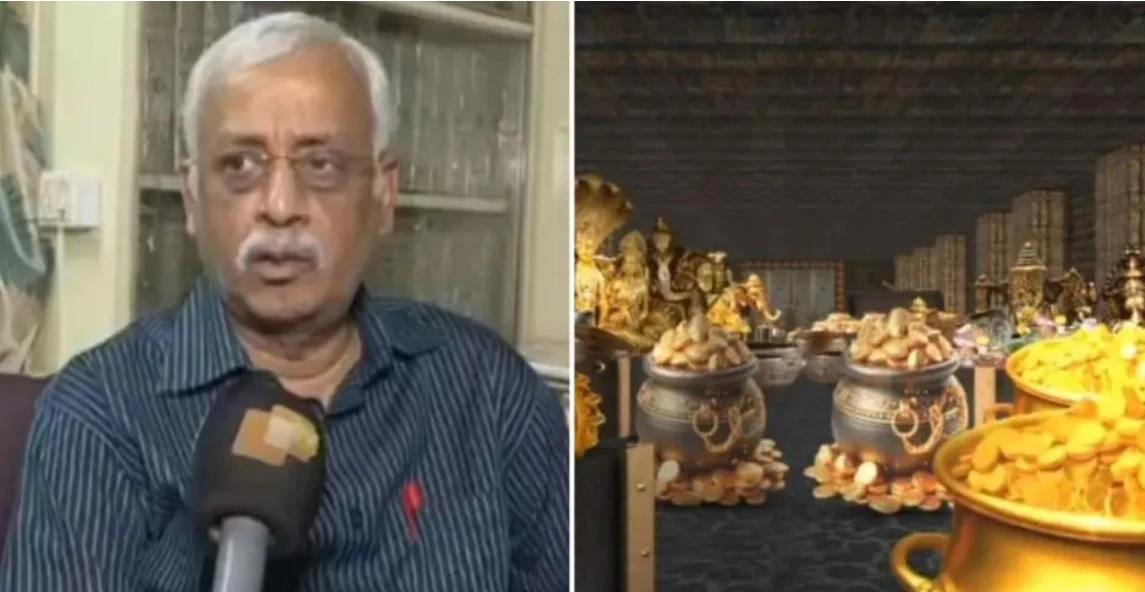Nestled within the sacred confines of Puri, where traditions of devotion intertwine with the echoes of history, lies the inner Ratna Bhandar—a repository not just of gold ornaments and precious artifacts, but also a trove that unveils the martial heritage of the region’s past rulers.
Amidst the recent relocation of valuables from this storied treasury, Justice Biswanath Rath, distinguished chair of a high-level committee, shared exclusive insights with OTV. He revealed an unexpected aspect of the inner sanctum—weapons, once wielded by Puri’s kings and soldiers in battles against formidable foes and rival monarchs from distant lands. Spears and spikes, weathered by time and conflict, were among the treasures unearthed from long-sealed chests and almirahs. Their surfaces, now tinged with the patina of history, obscured the material from which they were wrought. With meticulous care, these relics were methodically sealed and transferred to a temporary stronghold, safeguarding their legacy for future scrutiny.

Alongside these implements of war, the inner treasury yielded another enigmatic find—crowns, symbols of sovereignty and authority. Justice Rath, however, maintained a vow of silence regarding specifics: the number of crowns recovered and the identities of the regents they once adorned. “We have recovered some weapons like spears and spikes. Among others, we have also recovered some crowns. But I won’t reveal their number as I have taken a vow not to reveal that,” Rath asserted, underscoring the sanctity with which these historical artifacts are regarded.
The revelations stirred curiosity and speculation, prompting inquiries into their origins and historical context. Historian Ani Dhir, reflecting on the significance of these discoveries, expressed confidence in the Archaeological Survey of India’s capabilities to ascertain their age through advanced technological methods. “The ASI has the technology to ascertain how old they are. If they have any emblems, our historians can also throw light on them,” Dhir remarked, highlighting the interdisciplinary collaboration between scientific analysis and historical interpretation that promises to illuminate the artifacts’ narrative.
Yet, amidst these revelations, intrigue persists. The committee’s dismissal of rumors surrounding secret chambers and tunnels within the Ratna Bhandar complex has done little to quell public fascination. Questions linger about the untold stories concealed within the hallowed walls—legends of clandestine passages and hidden treasures that have captivated imaginations for generations.
Dr. Arabinda Padhee, esteemed chief of the Shree Jagannath Temple Administration (SJTA), acknowledged these sentiments while emphasizing procedural rigor in handling such discoveries. “Since the Standard Operating Procedure (SOP) currently does not address these aspects, we will recommend their inclusion to the government,” Dr. Padhee affirmed. This bureaucratic caution underscores the delicate balance between scholarly inquiry and custodial responsibility, ensuring that each step taken aligns with meticulous adherence to established protocols.
As discussions unfold, the narrative of the inner Ratna Bhandar emerges not merely as a repository of material wealth, but as a testament to the resilience and dynamism of Puri’s cultural heritage. Each artifact—whether a gilded crown or a battle-scarred spearspeaks volumes about the intricate tapestry of conquests, alliances, and rituals that have shaped the temple’s legacy over centuries. Their discovery offers a rare glimpse into the lives and aspirations of those who once safeguarded the sanctity of Puri’s spiritual heartland.
In the annals of history, Puri stands as a beacon of devotion and continuity—an enduring testament to the reverence with which its treasures are held. The ongoing saga of the Ratna Bhandar, enriched by recent revelations, underscores the timeless dialogue between preservation and exploration, inviting scholars and pilgrims alike to ponder the mysteries that lie beneath its venerable facade.
In the quietude of its chambers, where shadows whisper of bygone eras and the scent of incense mingles with the dust of ages, the inner Ratna Bhandar beckons—a repository of treasures yet to be fully unveiled, awaiting the touch of scholars and the gaze of seekers of truth.
I am not sure where you’re getting your information, but good
topic. I needs to spend some time learning more or understanding more.
Thanks for magnificent information I was looking for this info for my mission.
Your style is really unique in comparison to other folks I’ve read stuff from.
Thank you for posting when you’ve got the opportunity, Guess I’ll just bookmark this blog.